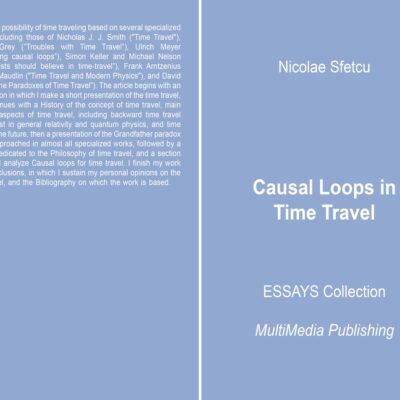 Different authors have attempted to clarify the aspects of remote action and God’s involvement on the basis of textual investigations, mainly from the Mathematical Principles of Natural Philosophy, (Newton, 1999b) Newton’s correspondence with Richard Bentley (1692/93), (Bentley 1693) and Queries that Newton introduced at the end of the Opticks book in the first three editions (between 1704 and 1721). (Newton 1952)
Different authors have attempted to clarify the aspects of remote action and God’s involvement on the basis of textual investigations, mainly from the Mathematical Principles of Natural Philosophy, (Newton, 1999b) Newton’s correspondence with Richard Bentley (1692/93), (Bentley 1693) and Queries that Newton introduced at the end of the Opticks book in the first three editions (between 1704 and 1721). (Newton 1952)
Andrew Janiak, in Newton as philosopher, (Janiak 2008) considered that Newton denied that gravity could be essential to matter, dismissed direct action at a distance, and also rejected the idea of a material substance. But Newton agreed, in Janiak’s view, with an immaterial ether, which he considered that Newton identifies himself with God himself: “Newton obviously thinks that God might be the very “immaterial medium” underlying all gravitational interactions among material bodies.” (Janiak 2008, 39).
Steffen Ducheyne, in Newton on Action at a Distance, (Ducheyne 2011) considered that Newton never accepted direct remote action, only material intervention or immaterial substance.
Hylarie Kochiras, in Gravity and Newton’s substance counting problem, (Kochiras 2009) argued that Newton was inclined to reject direct action, giving priority to the hypothesis of an intangible environment. But, in his speculative moments, Newton oscillated between accepting and rejecting direct remote action. Newton, according to Kochiras, claims that God is a virtual omnipresent, the force/agent must subsist in substance, and God is omnipresent substantially, resulting in a hidden premise, the principle of local action.
Eric Schliesser, in Newton’s substance monism, distant action, and the nature of Newton’s Empiricism, (Schliesser 2011) argued that Newton does not categorically refuse the idea that matter is active, and therefore accepted the possibility of a direct action at a distance. Newton affirms the virtual omnipresence of God in addition to his substantial omnipresence.
John Henry, in Gravity and De gravitatione: The Development of Newton’s Ideas on Action at a Distance, (Henry 2011) also argued that direct remote action was not inconceivable for Newton, rejecting the idea that gravity can be explained by subtle matter, accepting the idea of an omnipotent God, and rejecting the Epicurean attraction.
In my opinion, he categorically refused direct action as an intrinsic property of bodies, and remote action mediated by a material ether. Concerning the other two types of action, direct by divine intervention and mediated through an immaterial environment, Newton oscillated between these two possibilities, declaring on several occasions that he did not know the exact cause of gravity, but in both cases involved God, directly in direct action, and as the primary cause (the immaterial medium/ether being the secondary cause) in action through an immaterial ether. But since recognition of direct distance action could have given some credit to those who thought gravity could be essential to matter, and hence to atheism, Newton never openly acknowledged the possibility of such an idea (but neither has never denied this possibility directly). Towards the end of life, Newton leaned forward to a remote action mediated by an immaterial ether, seeking a phenomenological explanation in this respect.
Though some philosophers disagree with this formula in the idea that if the action is mediated is no longer remote, I keep the terminology used in the primary sources, where it is stated that Newton used the term “remote action” to refer to the movement that is not produced by direct contact between the distant bodies in question. In Opticks Query 29, Newton states: “Pellucid Substances act upon the Rays of Light at a distance in refracting, reflecting, and inflecting them, and the Rays mutually agitate the Parts of those Substances at a distance for heating them; and this Action and Re-action at a distance very much resembles an attractive Force between Bodies.” Newton also formulated draft variants of the query 17 in terms of “what is the means by which bodies act upon one another at a distance?” His way of formulating this question in the specific context suggested that, in order to “act remotely”, the bodies require the mediation of an immaterial substance.
Bibliography
- Bentley, Richard. 1693. “A Confutation of Atheism from the Origin and Frame of the World. Part II a Sermon Preached at St. Martin’s in the Fields, November the 7th, 1692 : Being the Seventh of the Lecture Founded by the Honourable Robert Boyle … / by Richard Bentley …” 1693. https://quod.lib.umich.edu/e/eebo/A69557.0001.001?view=toc.
- Ducheyne, Steffen. 2011. “Newton on Action at a Distance and the Cause of Gravity.” Studies in History and Philosophy of Science Part A 42 (1): 154–59. https://doi.org/10.1016/j.shpsa.2010.11.003.
- Henry, John. 2011. “Gravity and De Gravitatione: The Development of Newton’s Ideas on Action at a Distance.” Studies in History and Philosophy of Science Part A 42 (1): 11–27. https://doi.org/10.1016/j.shpsa.2010.11.025.
- Janiak, Andrew. 2008. “Newton as Philosopher.” Cambridge Core. July 2008. https://doi.org/10.1017/CBO9780511481512.
- Kochiras, Hylarie. 2009. “Gravity and Newton’s Substance Counting Problem.” Studies in History and Philosophy of Science Part A 40 (3): 267–80. https://doi.org/10.1016/j.shpsa.2009.07.003.
- Newton, Isaac. 1952. Opticks, Or, A Treatise of the Reflections, Refractions, Inflections & Colours of Light. Courier Corporation.
- ———. 1999. The Principia : Mathematical Principles of Natural Philosophy. Translated by I. Bernard Cohen, Anne Whitman, and Julia Budenz. Berkeley: University of California Press.
- Schliesser, Eric. 2011. “Newton’s Substance Monism, Distant Action, and the Nature of Newton’s Empiricism: Discussion of H. Kochiras ‘Gravity and Newton’s Substance Counting Problem.’” Studies in History and Philosophy of Science Part A 42 (1): 160–66. https://doi.org/10.1016/j.shpsa.2010.11.004.
This text is licensed under the Creative Commons Attribution-Sharealike 3.0 Unported License (CC-BY-SA)
Sfetcu, Nicolae, ” Newton’s action at a distance – Different views “, SetThings (January 12, 2019), DOI: 10.13140/RG.2.2.12870.11844, URL = https://www.telework.ro/en/newtons-action-at-a-distance-different-views/
PDF: https://www.telework.ro/ro/e-books/newtons-action-at-a-distance-different-views/













Leave a Reply